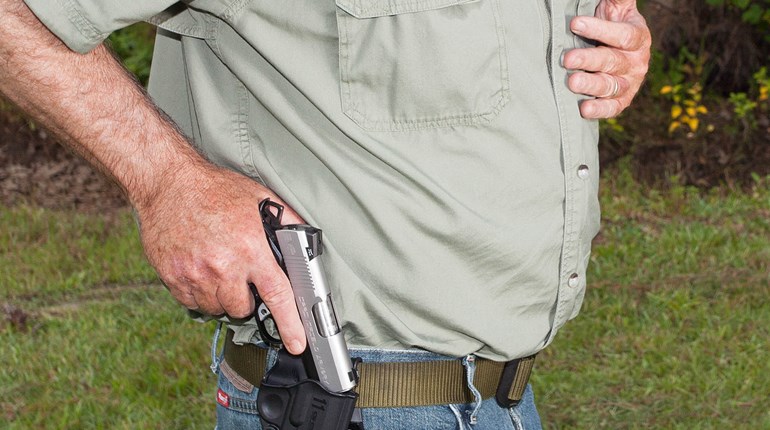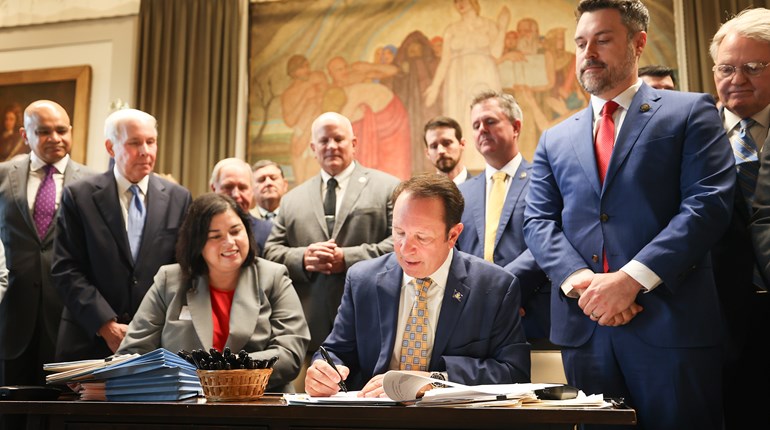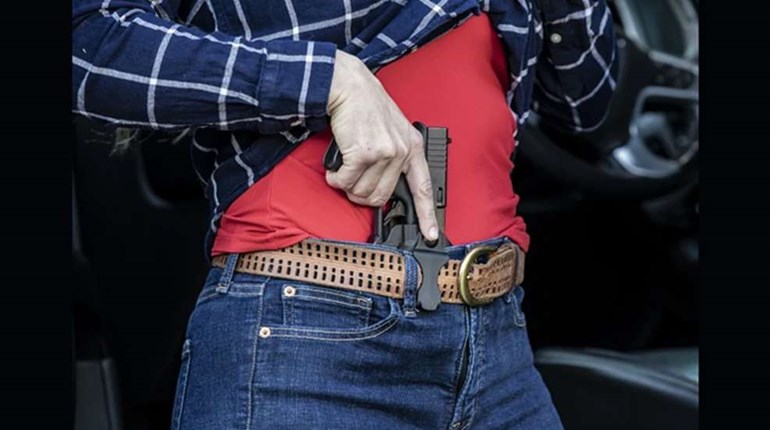
San Francisco’s recent decision to classify the National Rifle Association as a “terrorist” organization and the New York Attorney General’s “investigation” are just the latest steps in the gun-control lobby’s decades-long effort to demonize the NRA and America’s gun owners. They target the NRA because they know their dream of banning the private ownership of firearms in this country will never be realized unless they cripple or destroy this association.
The Gun Control Act of 1968 was described at the time of its passage by the late Sen. Edward M. Kennedy (D-Mass.) as “a good first step” on the road to banning the private ownership of firearms, but the emergence of organized gun owners willing to stand up for their Second Amendment rights proved a game changer.
I was a young aide in the Nixon White House two years later when Maryland Sen. Joseph Tydings (D), the chief U.S. Senate sponsor of the bill, scoffed at the very idea that a bunch of ragtag gun owners could beat him because he supported what he no doubt saw as “common-sense” restrictions on the Second Amendment. Tydings even decided to run ads touting his leadership in the anti-gun crusade.
I still remember sitting with others in the White House on election day wondering whether voters upset with Tyding’s role in passage of the gun-control act would make a difference. We didn’t have all the sophisticated ways to measure Election Day activities that exist today, but a senior White House aide said, “Let’s call our guy on the ground and find out.” When we got him on the phone, he said, “I don’t know exactly what’s going on, but outside Baltimore there are long lines of pick-up trucks delivering voters to the polls and most of them have gun racks in their back windows.”
Tydings and several other gun-control advocates were defeated that day and within a few years, the NRA emerged as the one organization with the strength, membership and resources to stand up to those fighting for a “gun-free” America.
By the 1970s, NRA lobbyists were working the halls of Congress. The new Institute for Legislative Action (ILA) was providing friends of the Second Amendment with the assistance they needed to win and those who saw the Gun Control Act of 1968 as a “good first step” found themselves unable to take a second step. NRA membership grew and gun owners at the grassroots level had the leadership and direction they needed to get their message heard in state capitols and in Washington, D.C.
The path to a “gun-free” America was blocked and those intent on registering, banning and confiscating firearms knew that unless they could weaken or find some way around the NRA, which they’d begun calling “the gun lobby,” they weren’t likely to succeed. They immediately set about trying to do just that.
When Jimmy Carter won the White House in 1976, he supported handgun registration, urged Congress to require a waiting period for firearms sales and joined the effort to demonize gun owners. His chief of staff said this of the NRA: “We’re going to get those bastards.” It proved an empty threat, however, as gun owners mobilized by the NRA defeated both his legislative and regulatory attacks on the Second Amendment.
By the mid-1980s, NRA-ILA’s Wayne LaPierre and Second Amendment supporters in Congress developed a successful strategy to roll back the most-onerous restrictions, including in the Gun Control Act of 1968.

The Firearms Owners Protection Act was signed into law by President Ronald Reagan after Missouri Congressman Harold Volkmer (D) pushed a “discharge petition” through the House that forced a vote over the objections of the Congressional leadership. It was a tremendous victory and a major reason LaPierre was chosen by the NRA Board to serve as the NRA’s Executive Vice President in 1991.
In his first Standing Guard column, LaPierre pledged “every ounce of energy, talent and experience at [his] disposal to maintain a powerful NRA presence nationwide to ensure the preservation and protection of our Second Amendment rights.” He and NRA President Joe Foss, who had been elected in 1988, built the NRA into one of history’s most-effective advocacy groups. ILA lobbyists were consistently ranked as among the most effective in Washington, NRA attorneys won case after case, political candidates sought the organization’s support and more gun owners, hunters and Second Amendment supporters joined the NRA.
Attacks on the organization intensified when the Clinton administration managed to ram what they and the media called an “assault-weapons ban” through Congress in 1994. Many in Washington believed the NRA was finally finished as a force in American politics. The Washington Post even ran a front-page headline that summer heralding the demise of the NRA.
It was, as it turned out, a short-lived victory. Second Amendment supporters went to the polls that November to elect a gun-friendly Congress and, within six years, would defeat a Democratic Presidential candidate who, like Tydings, decided gun owners didn’t really count and bragged about his desire to further restrict firearms rights.
While so-called “assault weapons” are responsible for statistically few firearms deaths—more people, according to FBI figures, are beaten to death each year than killed by all long arms including “assault weapons”—gun-control leaders decided they could confuse the public into believing rifles that looked cosmetically like military rifles were bad.
Following a strategy developed by the Violence Policy Center’s Josh Sugarmann, who argued that trying to ban “assault weapons” was a smarter gun-control tactic than seeking to ban handguns, this strategy was put into place.
Sugarmann and other anti-Second Amendment leaders made it clear, even as their strategy changed, their long-term goal remained the same: taking all guns away from law-abiding Americans. He said that, by going after “military-style weapons,” anti-gun leadership would grow in strength and ultimately be able to ban handguns and other firearms.
In the years that followed, the NRA led efforts to defeat anti-gun legislation in Congress, the courts and even in the United Nations. Congress refused to extend the Clinton “assault-weapons ban,” and passed NRA-supported legislation to prevent lawsuits from bankrupting American firearms manufacturers—this literally saved the industry, and with it, the ability of law-abiding Americans to acquire new firearms.
NRA leaders quickly decided that they should fight, not just to beat back the continuing attacks on gun rights, but also to expand American freedom. To expand firearms rights, the NRA went state by state to pass shall-issue concealed-carry laws. Today, thanks to these efforts, more than 18 million law-abiding Americans have permits. Sixteen states don’t even require legal firearms owners to get government-issued permits to carry concealed. Every state now has some form of concealed-carry law and more than a dozen have some form of “constitutional carry.”
The list of NRA accomplishments goes on and on. Gun owners may now carry in national parks and the NRA’s top-legislative priority is a national “reciprocity” law that would allow firearms owners to travel from state to state without fear of inadvertently being arrested under the myriad laws in effect in different jurisdictions.
I was serving as NRA president following the Sandy Hook tragedy, when then-President Barack Obama targeted the NRA and virtually everyone in Washington was convinced his package of firearms restrictions would be enacted. It was because gun owners stood up to serve notice that neither they, nor the organization they look to for leadership, can be wished away or ignored that this legislation didn’t pass.
The anti-Second Amendment crowd knows that none of this would have happened, but for the NRA. This enrages them. They have targeted both the organization and its leadership for decades, but they have never succeeded in taking the organization down. Their efforts to destroy the NRA continue today with increased frenzy because they believe, rightly, that it was the NRA and gun owners who decided the 2016 presidential election and prevented the appointment of anti-Second Amendment U.S. Supreme Court justices.
A few years ago, David Cole, a liberal Georgetown University law professor who is now litigation director for the American Civil Liberties Union, wrote that, at the end of the day, America’s gun owners should realize that, “The NRA, more so than any court, is the Second Amendment’s best protector. It ensured gun rights long before the Supreme Court recognized the right in 2008, and it continues to be the amendment’s first line of defense.”
Cole got that much right.
The current “progressive” drive to restrict or even abolish gun ownership won’t succeed as long as the NRA stands for the millions of Americans who support the Second Amendment.

































